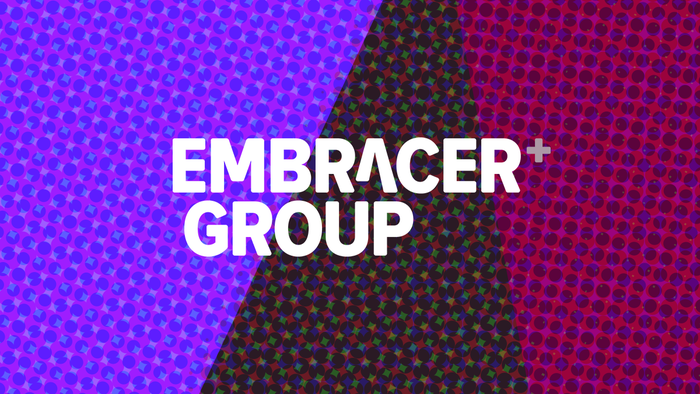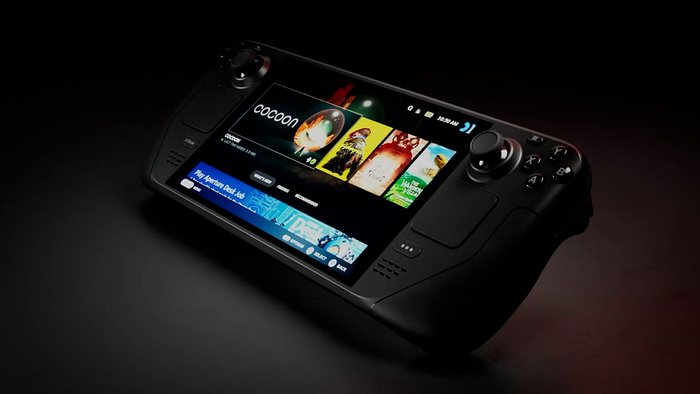It's that time. Gamasutra and Game Developer magazine staff present the studios and developers who pushed creative, commercial and cultural boundaries during the course of the year.
December 13, 2012

Author: by Gamasutra, GD mag staff
Presenting Gamasutra's Top 10 developers of 2012. Typically, Gamasutra publishes its Top 5 developers of the year. But not in 2012. This time, we've doubled the size of our list to a nice, even 10 in order to better accommodate the number of developers who exceeded expectations and pushed creative, commercial and cultural boundaries. Of course, even at 10, it was difficult narrowing down who to include. This is not intended to be a list of 10 developers who happened to make good games in 2012 (though releasing a good game certainly didn't hurt anyone's chances of being included). When selecting the developers on this list (presented alphabetically), Gamasutra and Game Developer magazine editors determined which ones defined the year in a positive way. These are the developers and studios that left their mark on 2012 -- the ones that the industry will be watching in the years ahead. - Kris Graft, Editor-in-Chief, Gamasutra
Cactus
For years, one-man show Jonatan "Cactus" Soderstrom has been almost embarrassingly prolific, producing a veritable catalogue of the thoughtful, manic and strange. Doing so many short, experimental games tuned his creativity -- but by his own admission, it highlighted how he's historically lacked the confidence to manage a bigger project, the sort that might actually pull in revenue. You know, for rent and stuff. This year, he forged an official partnership with visual artist Dennis Wedin, and from Dennaton Games, the sharp and addictive Hotline Miami was born, radiant with the surreality and irreverence of the '80s. The game's nearly-universal positive critical reception crowned the commercial debut of a prolific and always-unique underground artist -- and his attitude to software piracy was eye-opening, even revolutionary.  Though naturally he would have preferred the inevitable pirates pay, Soderstrom jumped into the trenches at torrent site The Pirate Bay to offer tech support, advice and even a patch for those that had obtained his game illegally. His embrace of the inevitability of piracy helped start a revolution in the relationship between devs and their community, and even led to other indies earning money for their games through pay-what-you-want goodwill. This year, Cactus has been an icon for how the creative agility and adaptability of a small indie can be leveraged against the larger landscape.
Though naturally he would have preferred the inevitable pirates pay, Soderstrom jumped into the trenches at torrent site The Pirate Bay to offer tech support, advice and even a patch for those that had obtained his game illegally. His embrace of the inevitability of piracy helped start a revolution in the relationship between devs and their community, and even led to other indies earning money for their games through pay-what-you-want goodwill. This year, Cactus has been an icon for how the creative agility and adaptability of a small indie can be leveraged against the larger landscape.
Cygames
It's not often that an entirely new genre segment explodes, but that's something Tokyo-based Cygames has managed in the mobile social space. Rage of Bahamut debuted earlier this year for Android and iOS in the West, and its Japanese-inflected collectible card gameplay has proven surprisingly successful. Since its launch, it's stayed parked at the top of the top grossing charts for both Google Play and the App Store. That's quite an achievement for a game that even its U.S. publisher, Ngmoco, was initially skeptical about.  But Cygames has accomplished more than blowing open the doors on a new genre on mobile devices. Fads are fads, and collectible card games will inevitably cool off when the market gets saturated (we're already well on the way to this). No, what Cygame did that will have a more lasting impact is conclusively proving that a niche of dedicated gamers can successfully be induced to pay for a free-to-play game on mobile at high enough rates to support the development of core games for these devices. Rage of Bahamut is the mid-core success story of the year, and paves the way for many developers to follow in its footsteps.
But Cygames has accomplished more than blowing open the doors on a new genre on mobile devices. Fads are fads, and collectible card games will inevitably cool off when the market gets saturated (we're already well on the way to this). No, what Cygame did that will have a more lasting impact is conclusively proving that a niche of dedicated gamers can successfully be induced to pay for a free-to-play game on mobile at high enough rates to support the development of core games for these devices. Rage of Bahamut is the mid-core success story of the year, and paves the way for many developers to follow in its footsteps.
Double Fine
It's entirely possible that 2012 will go down as the year that game development finally became democratized by game players and, in many ways, it all started with Double Fine Adventure. The company managed to smash all of the previous video game crowdfunding records when it managed to raise $3.3 million dollars to develop an old-fashioned adventure game, over eight times the $400,000 it was asking for. And it did it merely by being itself.  Crowdfunding has become so commonplace so quickly that it's hard to imagine how weird it would have been, even a year ago, to have a video game designer on camera in his office asking his fans for money. Double Fine paved the way for what appears to be a crowdfunding revolution in 2012. Add to that its unique Amnesia Fortnight project, in which fans were able to vote on which concepts the studio would prototype next (as well as watch them unfold and, at the end, play them), and you have what could be the early stages of what is either a temporary trend or a video game revolution. Either way, you can't look back at 2012 without closely examining Double Fine.
Crowdfunding has become so commonplace so quickly that it's hard to imagine how weird it would have been, even a year ago, to have a video game designer on camera in his office asking his fans for money. Double Fine paved the way for what appears to be a crowdfunding revolution in 2012. Add to that its unique Amnesia Fortnight project, in which fans were able to vote on which concepts the studio would prototype next (as well as watch them unfold and, at the end, play them), and you have what could be the early stages of what is either a temporary trend or a video game revolution. Either way, you can't look back at 2012 without closely examining Double Fine.
King.com
Before King.com skyrocketed to success on the back of Bubble Witch Saga -- becoming Facebook's number two developer in the process -- conventional wisdom was that if you didn't get onto the platform during the gold rush days of cheap virality, it would be impossible to build meaningful audience share. That's one myth shattered.  But there's more to the King.com story. For years now, the company has operated a successful web-based casual games business. It was able to transition over to Facebook with a stack of proven games, and smartly wrap them in what it calls a "social envelope" which powers its success on that specific platform. Delivering puzzle games to an underserved and hungry audience has driven its success. Then, King.com turned around and spun its triumph on Facebook into a major win on iOS, driving top 10 success for Bubble Witch Saga without spending a dime marketing the game. Rather, success was achieved by getting its existing audience to go mobile, thanks to a strategy of smart viral integration and progression and purchase parity between versions of its games. This set the standard for cross-platform integration. Bubble Witch Saga certainly wasn't the first bubble-popping game, and it wasn't even the first on Facebook -- but it's shown the world how this segment of the business is supposed to work.
But there's more to the King.com story. For years now, the company has operated a successful web-based casual games business. It was able to transition over to Facebook with a stack of proven games, and smartly wrap them in what it calls a "social envelope" which powers its success on that specific platform. Delivering puzzle games to an underserved and hungry audience has driven its success. Then, King.com turned around and spun its triumph on Facebook into a major win on iOS, driving top 10 success for Bubble Witch Saga without spending a dime marketing the game. Rather, success was achieved by getting its existing audience to go mobile, thanks to a strategy of smart viral integration and progression and purchase parity between versions of its games. This set the standard for cross-platform integration. Bubble Witch Saga certainly wasn't the first bubble-popping game, and it wasn't even the first on Facebook -- but it's shown the world how this segment of the business is supposed to work.
Christine Love
Sometimes the developers that lead new trends in the ways we think about games never set out to make "games", per se, at all. Toronto-based Christine Love started out exploring ways to make her writing interactive, and work like Digital: A Love Story and Don't Take It Personally, Babe, It Just Ain't Your Story gained cult acclaim for their unique storytelling -- while Love herself became known as one of the rare creators experimenting with the visual novel format in the West.  This year's Analogue: A Hate Story, launched in February, is her most expansive work yet, tasking the player with mining the diaries of a mysterious lost society -- while engaging and bonding with the AI characters who manage that information. The game caught fire among fans for its thoughtful storytelling, especially as regards the development of romantic relationships through conversation, a subject rarely of focus in indie games. The popularity of Analogue, of which Love has independently sold more than 40,000 units this year, speaks to demand for Love's attention for themes of social interaction and romance in the digital age -- and is incredibly relevant as storytelling moves to the forefront among the text-oriented niches that are exploding in the age of portable reading.
This year's Analogue: A Hate Story, launched in February, is her most expansive work yet, tasking the player with mining the diaries of a mysterious lost society -- while engaging and bonding with the AI characters who manage that information. The game caught fire among fans for its thoughtful storytelling, especially as regards the development of romantic relationships through conversation, a subject rarely of focus in indie games. The popularity of Analogue, of which Love has independently sold more than 40,000 units this year, speaks to demand for Love's attention for themes of social interaction and romance in the digital age -- and is incredibly relevant as storytelling moves to the forefront among the text-oriented niches that are exploding in the age of portable reading.
Obsidian Entertainment
If Double Fine paved the dusty road between game players and game developers, it was Obsidian that turned it into a two-way street. Double Fine proved that crowdfunding game development is viable, but it was Obsidian that made its fans feel like they were part of the team. Through constant updates, fan forums, and a constant back and forth feedback loop, the team's "Project Eternity" feels like a crowd-developed game.  More importantly, Obsidian represents a developer quickly adapting and thriving in what is a rapidly changing game development world. The studio had been struggling with bad deals and draining triple-A work, but thanks to crowdfunding, it may have reinvented itself while playing to its core strengths. If the studio is able to sustain with Project Eternity, and even have a follow-up developed in a similar way, it will have proven that a decently-sized studio can survive and thrive by independently making the games it wants to make, for fans that want to play them.
More importantly, Obsidian represents a developer quickly adapting and thriving in what is a rapidly changing game development world. The studio had been struggling with bad deals and draining triple-A work, but thanks to crowdfunding, it may have reinvented itself while playing to its core strengths. If the studio is able to sustain with Project Eternity, and even have a follow-up developed in a similar way, it will have proven that a decently-sized studio can survive and thrive by independently making the games it wants to make, for fans that want to play them.
Supercell
It can be tricky to admit your mistakes, learn from them and move on. That's exactly what Finnish games start-up Supercell did in 2011, when it realized that its multiplatform release Gunshine wasn't so hot with players. Now, a year on from that false start, the company is one of the most successful mobile studios to date, and currently has two games in the top five grossing apps on the iOS App Store. So how exactly did Supercell swing from a dud release, to making $500,000 a day from two releases, Clash of Clans and Hay Day? The company recently told Gamasutra that it's all down to a mixture of elements, including its tablet-first approach, and its culture of celebrating failure and reveling in zero bureaucracy.  Whether the company will be able to repeat this success with its next upcoming releases remains to be seen, but it's hard to deny that Supercell is keeping its eye on the ball, and scoring success through carefully-planned mobile game execution. Supercell's success should also make other studios question whether attempting to cater for multiple platforms is, in fact, the right approach.
Whether the company will be able to repeat this success with its next upcoming releases remains to be seen, but it's hard to deny that Supercell is keeping its eye on the ball, and scoring success through carefully-planned mobile game execution. Supercell's success should also make other studios question whether attempting to cater for multiple platforms is, in fact, the right approach.
Telltale Games
As the foremost stalwart of the episodic business model, Telltale Games had found success with the format, but the studio lacked a real bona fide blockbuster -- a hit that would prove once and for all that the episodic business model is not only commercially viable, but also a format that is capable of uniquely engaging audiences on an emotional level. All due respect to previous titles from Telltale, but it wasn't until The Walking Dead that the studio really nailed the formula for an episodic series, from a commercial and creative standpoint. It seems that Telltale realized that it was time to identify and leverage the creative advantages of the episodic model, rather than fight against the disadvantages.  What The Walking Dead did this year was reinvigorate (and to an extent, redefine) the adventure game genre. And forget about the episodic format of the game for a minute -- aside from that, its storytelling and narrative were arguably the best of the year, character development was top notch and choices in the game presented a sense of urgency and meaningfulness. All of those aspects added up to one of the most engaging games of the year, one that people could not stop talking about. This list isn't really meant about studios that "merely" released a good game this year, but Telltale made such a leap forward with this series that it likely changed the studio for good -- we suspect other studios have been examining the series closely as well.
What The Walking Dead did this year was reinvigorate (and to an extent, redefine) the adventure game genre. And forget about the episodic format of the game for a minute -- aside from that, its storytelling and narrative were arguably the best of the year, character development was top notch and choices in the game presented a sense of urgency and meaningfulness. All of those aspects added up to one of the most engaging games of the year, one that people could not stop talking about. This list isn't really meant about studios that "merely" released a good game this year, but Telltale made such a leap forward with this series that it likely changed the studio for good -- we suspect other studios have been examining the series closely as well.
ThatGameCompany
Although ThatGameCompany is still very much alive and kicking, 2012 felt like the end of an era at the Los Angeles studio. Up to this point, its three-game contract with Sony has yielded remarkable results with Flow and Flower, and swarms of players and the press alike were eager to see how the agreement's third and final release, Journey, would play out.  As we now know, Journey did not disappoint, garnering critical acclaim all-round. Like its predecessors, Journey is not your typical video game release, with a huge focus on visual stimulus and exploration with no hand-holding provided. And yet, while its premise appeared to clash with the types of experiences that the average console player would usually take part in, the game was hugely successful on PlayStation 3, and it soon became impossible to find someone who hadn't at least given it a go. ThatGameCompany showed that players are in fact open to different experiences outside of their comfort zones, and it's notable that other similar games (such as The Unfinished Swan) have also been discussed widely since Journey's release. Of course, that's not the whole 2012 story. Following the release of Journey, and the subsequent end of the Sony contract, various big-name individuals began to peel away from the company, including Kellee Santiago, Robin Hunicke and Chris Bell. Co-founder Jenova Chen remains, however, and the company now plans to develop games for multiple platforms. With all the studios' accomplishments in taking such emotional games mainstream, we can't wait to see what's next.
As we now know, Journey did not disappoint, garnering critical acclaim all-round. Like its predecessors, Journey is not your typical video game release, with a huge focus on visual stimulus and exploration with no hand-holding provided. And yet, while its premise appeared to clash with the types of experiences that the average console player would usually take part in, the game was hugely successful on PlayStation 3, and it soon became impossible to find someone who hadn't at least given it a go. ThatGameCompany showed that players are in fact open to different experiences outside of their comfort zones, and it's notable that other similar games (such as The Unfinished Swan) have also been discussed widely since Journey's release. Of course, that's not the whole 2012 story. Following the release of Journey, and the subsequent end of the Sony contract, various big-name individuals began to peel away from the company, including Kellee Santiago, Robin Hunicke and Chris Bell. Co-founder Jenova Chen remains, however, and the company now plans to develop games for multiple platforms. With all the studios' accomplishments in taking such emotional games mainstream, we can't wait to see what's next.
Ubisoft Montreal
Instead of fretting too much over transitions in the triple-A space, Ubisoft Montreal (backed up by Ubisoft's worldwide network of studios) has been keeping its head down, making big, beautiful games, selling lots of them and simply knowing the kind of customers that it needs to cater to. Better than any other publisher-owned studio this year, Ubisoft Montreal has been able to deftly balance business responsibilities with an evolving creative vision that makes an honest effort to go beyond slapping a thick coat of gloss on tired ideas.  Ubisoft is apparently confident in the capabilities of its Montreal studio, releasing both Assassin's Creed III and Far Cry 3 into the thick of the highly-competitive 2012 shopping season. The strategy has worked out so far with Assassin's Creed III -- the annualized game still has momentum, selling through to consumers 7 million units in one month, the fastest-selling game in Ubisoft's history, according to the company. It's a testament to the game's quality (and to its massive marketing campaign). And when the studio revealed the upcoming Watch Dogs this year at E3, for many, it was the highlight of the show. People are willing to pay $60 for a video game today, but expectations are high, and perhaps players are more demanding, as they have so many choices nowadays. They want to feel respected by developers. That respect is conveyed through a top-tier product that challenges not only their motor skills, but their expectations. There will always be room for triple-A games from the big publishers, as long as studios like Ubisoft Montreal lead by example -- simply inject about $60 worth of value into these games, and perhaps everything will be just fine.
Ubisoft is apparently confident in the capabilities of its Montreal studio, releasing both Assassin's Creed III and Far Cry 3 into the thick of the highly-competitive 2012 shopping season. The strategy has worked out so far with Assassin's Creed III -- the annualized game still has momentum, selling through to consumers 7 million units in one month, the fastest-selling game in Ubisoft's history, according to the company. It's a testament to the game's quality (and to its massive marketing campaign). And when the studio revealed the upcoming Watch Dogs this year at E3, for many, it was the highlight of the show. People are willing to pay $60 for a video game today, but expectations are high, and perhaps players are more demanding, as they have so many choices nowadays. They want to feel respected by developers. That respect is conveyed through a top-tier product that challenges not only their motor skills, but their expectations. There will always be room for triple-A games from the big publishers, as long as studios like Ubisoft Montreal lead by example -- simply inject about $60 worth of value into these games, and perhaps everything will be just fine.
You May Also Like







